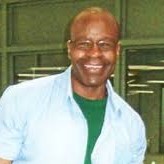
b: 1969
Keith LaMar
Summary
Name:
Keith LaMarNickname:
Bomani ShakurYears Active:
1989 - 1993Birth:
May 31, 1969Status:
Awaiting ExecutionClass:
MurdererVictims:
6Method:
Beating / Stabbing / StrangulationNationality:
USA
b: 1969
Keith LaMar
Summary: Murderer
Name:
Keith LaMarNickname:
Bomani ShakurStatus:
Awaiting ExecutionVictims:
6Method:
Beating / Stabbing / StrangulationNationality:
USABirth:
May 31, 1969Years Active:
1989 - 1993bio
Keith LaMar was born on May 31, 1969, in Cleveland, Ohio. Raised in a working-class Black neighborhood, LaMar’s early life was marked by hardship, systemic inequality, and economic instability. As a teenager, he was drawn into street life during the crack epidemic of the 1980s, which deeply impacted inner-city communities like the one he grew up in.
At the age of 20, in 1989, LaMar was convicted for the fatal shooting of a man during what he claimed was a drug-related dispute. He was sentenced to 15 years to life and was serving time at the Southern Ohio Correctional Facility in Lucasville, a high-security prison notorious for gang activity, racial tensions, and overcrowding.
LaMar began a journey of self-education behind bars, adopting the name Bomani Shakur as part of a spiritual transformation. He often spoke out about prison conditions, systemic injustice, and racial disparities in the criminal justice system. Despite his incarceration, he maintained an outspoken presence through essays, interviews, and later, a self-published memoir.
murder story
In April 1993, the Southern Ohio Correctional Facility became the epicenter of one of the deadliest prison riots in U.S. history. Over the span of 11 tense days, more than 450 inmates took over the prison. Rival prison gangs, including the Aryan Brotherhood, Black Muslims, and Gangster Disciples, formed an uneasy alliance against what they saw as oppressive prison conditions. Religious objections to TB testing, poor treatment of inmates, and systemic overcrowding sparked the revolt.
During the chaos, 10 people were killed: nine inmates and one corrections officer, Robert Vallandingham. Several of the inmates were believed to be informants and were brutally murdered. While the gangs operated through a daily "leadership council," control was fragmented and violence spread quickly.
Bomani Shakur, then known as Keith LaMar, was not affiliated with any gang. Authorities later accused him of leading a separate death squad responsible for killing five of the inmates: Darrell Depina, Bruce Vitale, Albert Staiano, William Svette, and Dennis Weaver. LaMar has repeatedly denied this claim, asserting that he was not present in the key riot location (L-6) for most of the standoff. He stated he was removed by prison staff early on and held in a separate block (K block).
Despite inconsistencies in witness testimonies and disputes over physical evidence, LaMar was convicted and sentenced to death in 1995. His case became part of the "Lucasville Five", a group of inmates condemned for their alleged leadership roles during the riot. His supporters claim the trial was unfair and that crucial exculpatory evidence was suppressed. Over the years, LaMar has drawn attention from scholars, legal advocates, and human rights groups, becoming a symbol in broader debates around justice and the death penalty.
On January 3, 2011, LaMar and fellow Lucasville defendants Siddique Abdullah Hasan (Carlos Sanders) and Jason Robb began a non-violent protest while housed in solitary confinement at the Ohio State Penitentiary in Youngstown. Confined for 23 hours a day with no physical contact visits, restricted phone use, no access to prison stores, and zero access to news databases, they initiated a twelve-day, liquid-only hunger strike to demand treatment equal to other Ohio death row inmates.
By January 14, after public support grew and organizations like the ACLU and the Center for Constitutional Rights spoke out, Warden David Bobby agreed to policy changes. The inmates’ demands were granted: daily phone calls, limited contact visits, more recreation time, and access to basic amenities. The hunger strike ended on January 15, 2011, marking one of the few times a protest by death row inmates led to actual reform.
After the riot, Ohio death row underwent several relocations. Originally housed at the Southern Ohio Correctional Facility (Lucasville), inmates were transferred to Mansfield Correctional Institution, then to the Ohio State Penitentiary (OSP) in Youngstown, a facility where LaMar and the other Lucasville defendants remained under tight security. In 2012, most of Ohio’s condemned prisoners were moved to Chillicothe Correctional Institution, and as of 2024, they now reside at a new death row unit in Ross Correctional Institution. However, LaMar and a few others with high-security designations still remain at OSP. As of 2025, LaMar remains on death row, with his execution scheduled for January 13, 2027.